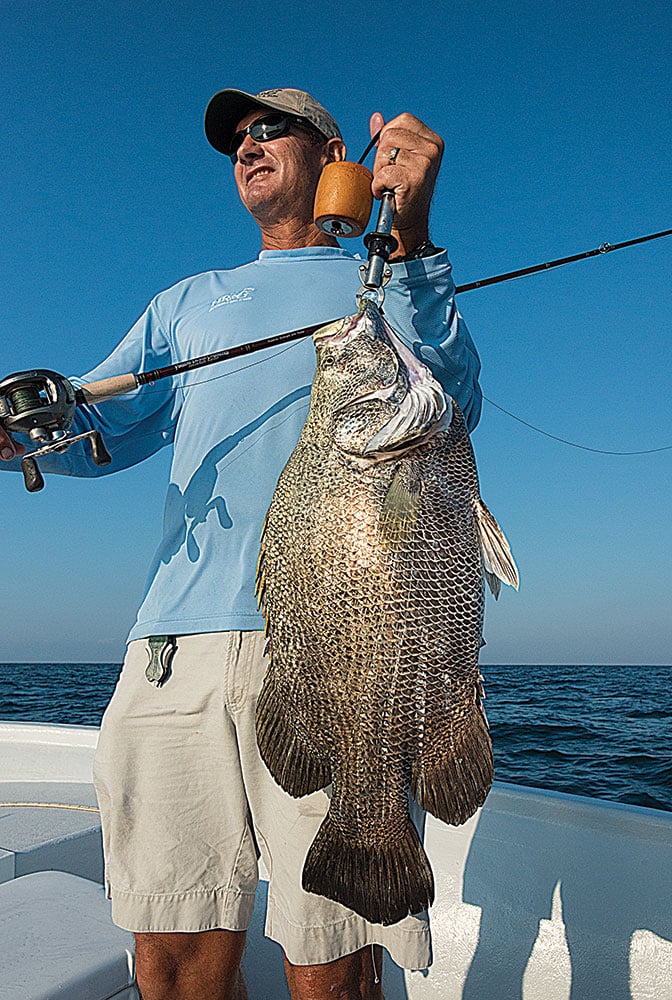
“Got two under this one,” I shouted, “and the one on the right looks pretty big.” I shut off the trolling motor and let the boat’s momentum take us closer to the buoy before I sent a LiveTarget shrimp sailing in the Tripletails’ direction. Trying my best to keep the fish from spooking, I side-armed the cast so the lure would hit the water with minimal splash. As I intended, the fake crustacean landed softly, some 4 feet away from the eventual target. Mission accomplished!
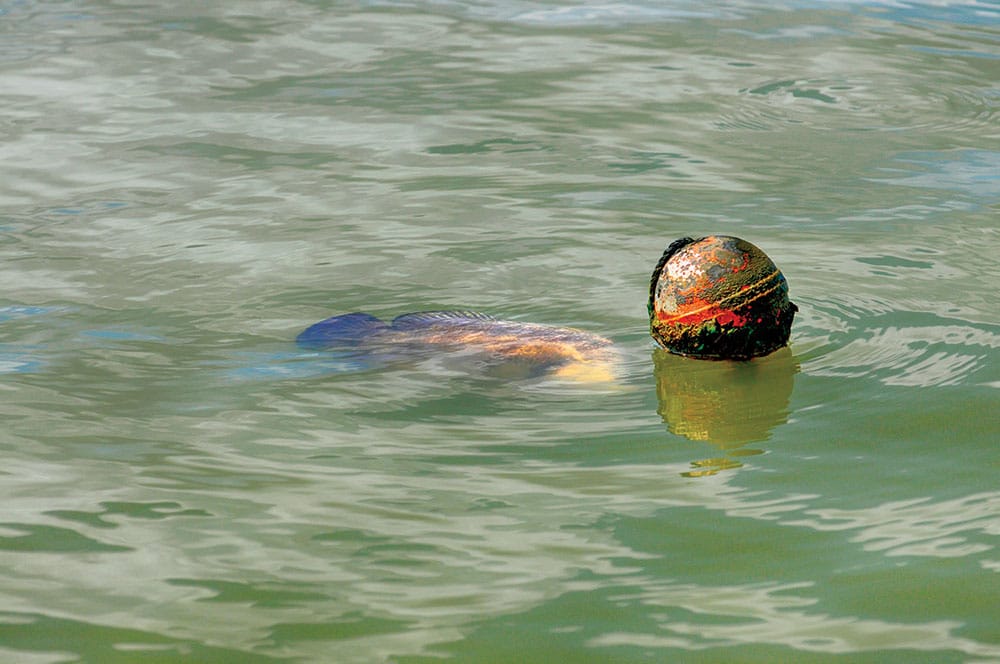
But that wasn’t the only critical part of the presentation. I still had to persuade at least one of the tripletail to eat. I had barely let the artificial break the surface when I started cranking it in slowly, very slowly. Keeping the rod high, I guided the lure by pointing the rod tip to one side or the other. As my shrimp counterfeit passed the crab-trap buoy, one of the prehistoric-looking slabs turned and slurped it up. Sometimes tripletail fishing is that easy.
The ensuing tug-of-war was exhilarating in more ways than one. The tripletail yanking on my line was well above average, but it was its savvy rather than its brawn that made me sweat the tussle. First, it made a U-turn around the buoy rope. Then it dropped out of sight, dashed toward another crab-trap marker nearby and made a hard right the instant it swam past the rope. Luckily, the 10-pound braid held up to the abrasion, and a few minutes later, after some fancy boat handling, we brought the plump 13-pounder aboard.
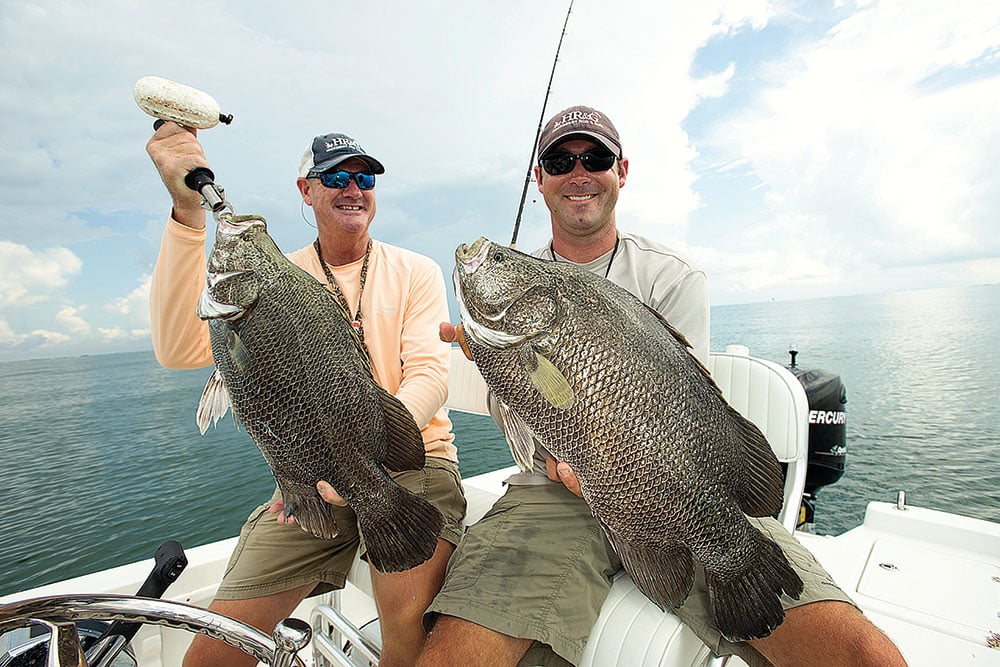
Tripletail are warm-water pelagics found across the tropics. In U.S. waters, they roam as far north as Massachusetts (although rarely above Chesapeake Bay), south to Florida and west to Texas. The name comes from the dimensions and placement of the dorsal and anal fins, which resemble additional tails. A triangular head with the eyes on top and close together in addition to a large mouth are features of a fish that attacks its prey from below. Their favorite foods? Tripletail love shrimp and small crabs, but they are opportunistic feeders that gladly make a meal out of small baitfish and the young of numerous species seeking shelter around buoys, weeds and other floating debris.
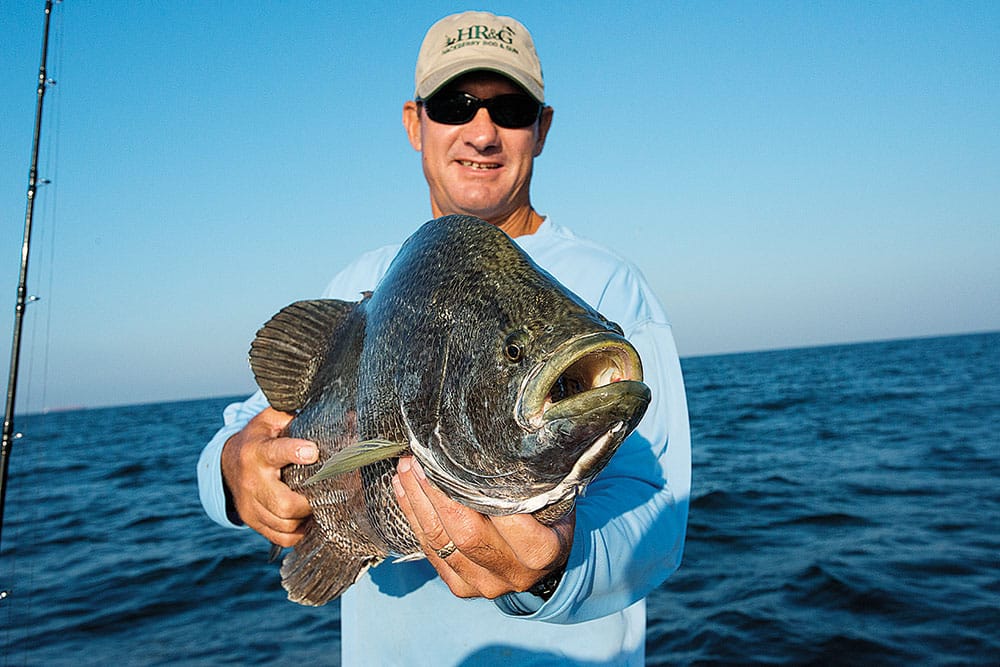
Where to Catch Tripletail
Although I have caught tripletail inshore and offshore at different times of year and in many places, October along the Gulf Coast is hard to beat. The premise is simple enough for anyone with a boat — or a kayak, if you are adventurous and have the stamina required to paddle across long stretches of open water like a Viking — to target the fish with reasonable expectations of succeeding.
The month of October is the start of the commercial-crabbing season across the Gulf Coast. That means thousands of traps, with their respective marker floats attached, appear along the Florida, Alabama, Mississippi, Louisiana and Texas coasts, providing a plethora of hangouts for tripletail that anyone not legally blind can easily spot.
And another great thing about the crab traps: Dozens of them are usually set close together, making it possible to hop from one buoy to the next — and the next — making for lots of opportunities at tripletail fishing.
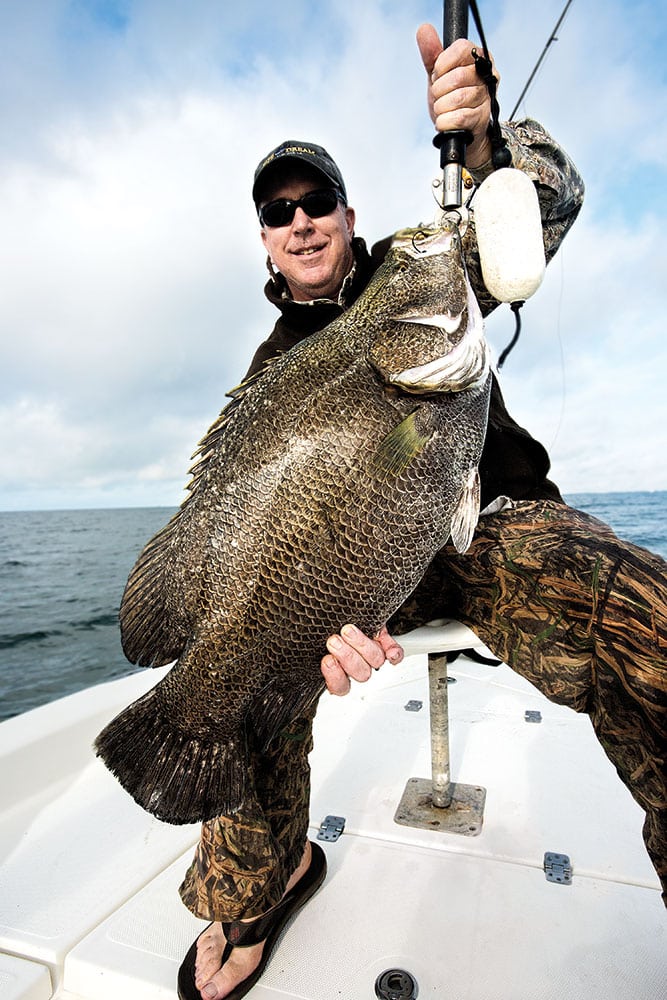
How to Catch Tripletail Sight Fishing
Tripletail are not the most skittish fish — you can often get within a few feet, and they still refuse to leave their post below their chosen floating object — but it is a good idea to get only as close as you need to confirm their presence.
Exactly how close that is will depend on water clarity and the conditions. If there’s a bit of chop and the water is murky, you might need to get almost a rod length away to know for sure. Luckily, the decreased visibility makes it more difficult for the fish to see you.
When it comes to spotting tripletail, tower boats have a distinct advantage. Someone looking down from 8 or 10 feet above the surface detects fish from a much safer distance than someone standing on the deck.
My flats skiff is not equipped with a tower, but it has a casting platform, and you would be surprised how much difference the extra 15 inches of elevation makes when looking for fish. If you have a sturdy cooler on board, don’t be afraid to use it as a perch.
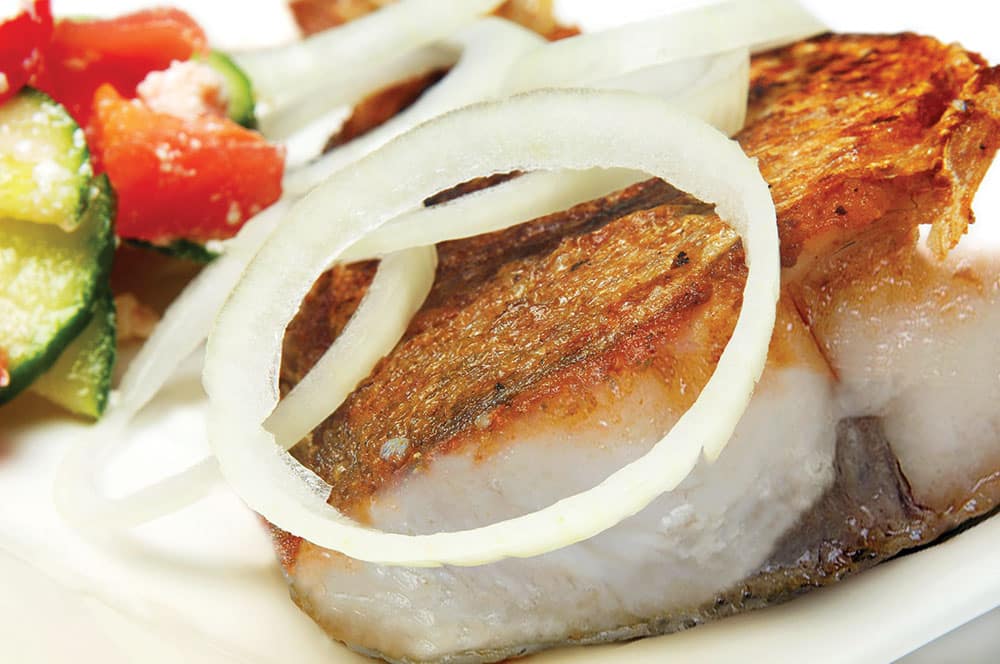
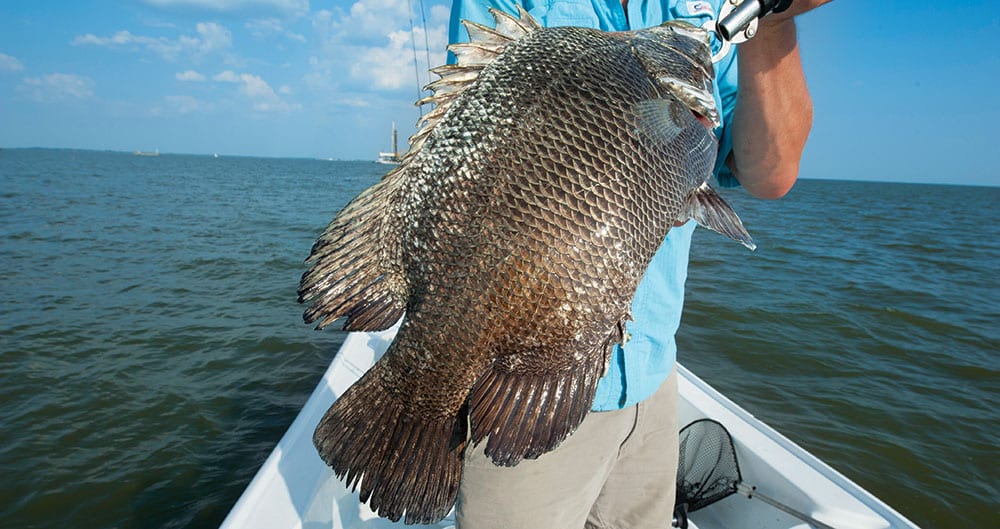
Find More Than One Tripletail in One Spot
Tripletail abound across the Gulf Coast from late spring to the middle of fall. Some float on the surface, away from structure or flotsam, but many gravitate towards navigational markers, weed lines and, of course, crab traps.
Seldom will you find more than a single tripletail under each trap marker, but it can happen. I have encountered pairs on a number of occasions, and three a couple of times. Both times I came across a trio of tripletail, they were daisy-chaining, a mating dance associated only with tarpon up until recently. I witnessed this little-known spawning ritual off Jekyll Island, Georgia, tripletail’s only confirmed spawning grounds in U.S. waters.
I fished there with Capt. Greg Hildreth — a friend who guides in that area — and a biologist for Georgia’s Department of Natural Resources. Our efforts contributed to that state’s tripletail-tagging program.
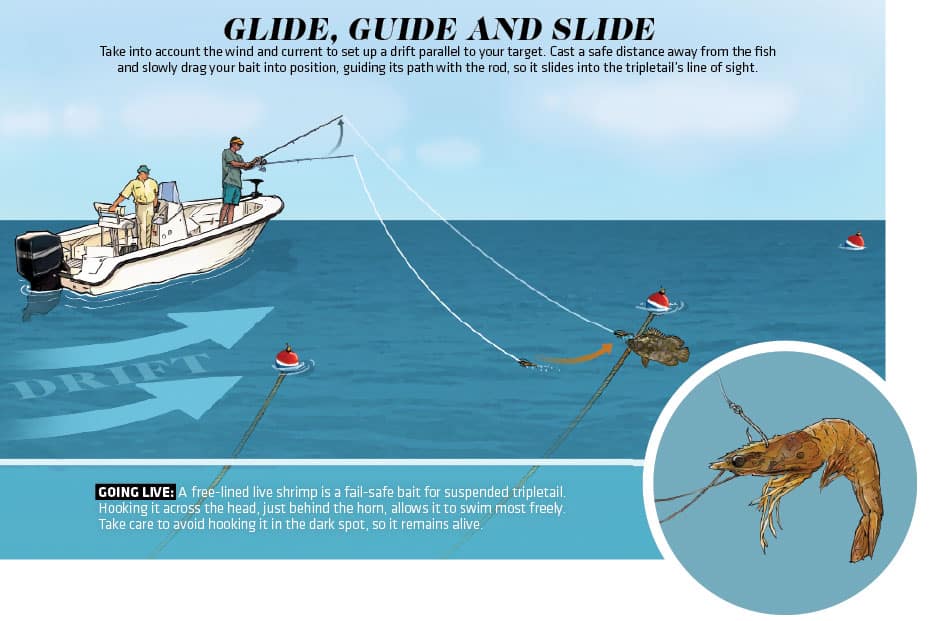
Tripletail Can Change Colors to Camoflage
This species’ talent for camouflage is remarkable. The fish can change color just enough to blend with whatever flotsam they choose to hang around. When free-floating, they often lie on their side, on or just below the surface, and they take on a two-tone coloration. Somehow they manage to make half their bodies pale, almost white, while keeping the rest some shade of brown. It’s easy to mistake a tripletail for a clump of weeds or drifting debris, so pay close attention even when no trap buoys or channel markers are nearby.
While tripletail typically run in the 2- to 5-pound range, larger specimens are common. It’s possible to catch a couple of 8- to 12-pounders, along with a bunch of smaller ones, if you spend a few hours checking the crab traps. And finding a bruiser in the 20-pound class is not out of the question.










